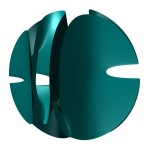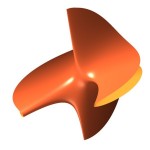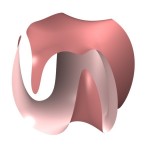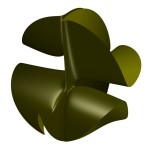Press release: images
Below are images of some of the shapes that we have analyzed in our project so far. Clicking on any of the thumbnails leads to a larger version of the same image (at a resolution of 300dpi). Please email me if you need larger or higher-resolution images. A description of what the images show is here.
 |
 |
slices of the Fano variety  |
 |
 |
slices of the cubic threefold |
 |
 |
slices of a Fano variety (#1 on the rank-2 list) |
 |
 |
slices of a Fano variety (#4 on the rank-2 list) |
 |
 |
slices of a Fano variety (#2 on the rank-4 list) |
 |
 |
slices of the quadric threefold |
 |
 |
slices of a Fano variety (#2 on the rank-2 list) |
 |
 |
slices of a Fano variety (#9 on the rank-3 list) |
What are these images?
We are searching for special shapes, called Fano varieties, that are the “elements” in our “periodic table of shapes”. We created the images above when analyzing 3-dimensional Fano varieties. It is difficult to visualize a complex 3-dimensional shape, but one way to do it is to look at slices through the shape. For example, to visualize the human brain (which is also a complex 3-dimensional shape!) you can take slices using an MRI scanner, and then assemble these slices to view the whole brain, like this: (Thanks to Dr Daniel Bulte at the University of Oxford for the animation.)
The images above are slices of some of our Fano varieties. Our slices are curved surfaces (unlike the slices of brain, which are flat) because the Fano varieties themselves are curved 3-dimensional shapes: the slices become flat if you view them in four dimensions.
If you think of the fourth dimension as time, then a curved three-dimensional space becomes a family of surfaces (the slices pictured above) that change with time. To visualize the whole Fano variety this way, we created animations showing how these slices change with time.
[…] by Merlin Evans (my girlfriend), based on some computer generated images produced by the Fanosearch team. Share this:TwitterFacebookLike this:Like Loading… Image | This entry was posted in […]